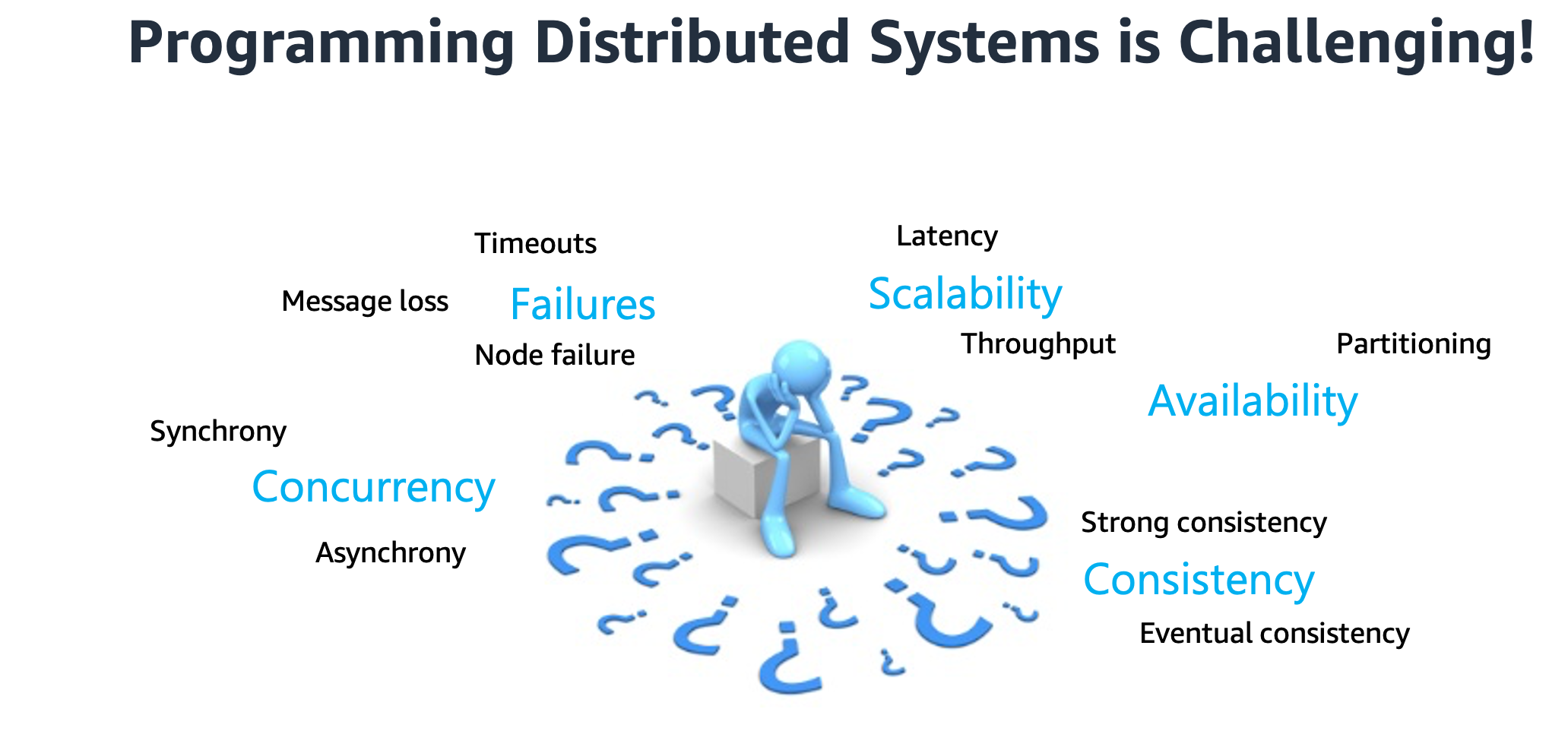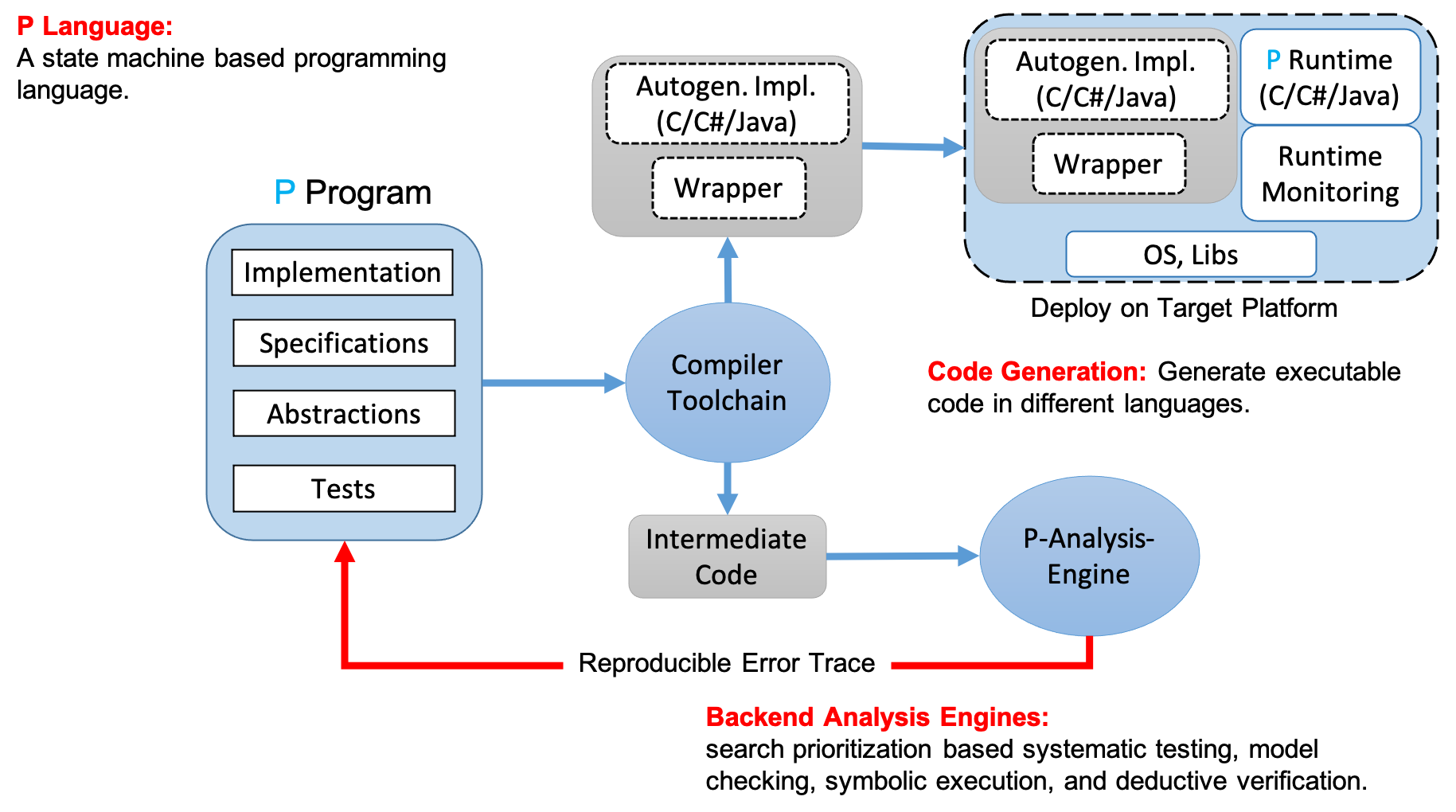What is P?

Distributed systems are notoriously hard to get right (i.e., guaranteeing correctness) as the programmer needs to reason about numerous control paths resulting from the myriad interleaving of events (or messages or failures). Unsurprisingly, programmers can easily introduce subtle errors when designing these systems. Moreover, it is extremely difficult to test distributed systems, as most control paths remain untested, and serious bugs lie dormant for months or even years after deployment.
The P programming framework takes several steps towards addressing these challenges by providing a unified framework for modeling, specifying, implementing, testing, and verifying complex distributed systems.
P Framework

The P framework can be divided into three important parts:
P Language
P provides a high-level state machine based programming language to formally model and specify distributed systems. The syntactic sugar of state machines allows programmers to capture their system design (or protocol logic) as communicating state machines, which is how programmers generally think about their system's design. P is more of a programming language than a mathematical modelling language and hence, making it easier for the programmers to both: (1) create formal models that are closer to the implementation (sufficiently detailed) and also (2) maintain these models as the system design evolves. P supports specifying and checking both safety as well as liveness specifications (global invariants). Programmers can easily write different scenarios under which they would like to check that the system satisfies the desired correctness specification. The P module system enables programmers to model their system modularly and perform compositional testing to scale the analysis to large distributed systems.
Models, Specifications, Model Checking Scenario
A quick primer on what a model is, versus a specification, and model checking scenarios: (1) a specification says what the system should do (correctness properties); (2) a model captures the details of how the system does it; (3) a model checking scenario provides the finite non-deterministc test-harness or environment under which the model checker should check that the system model satisfies its specifications.
The underlying model of computation for P programs is communicating state machines (or actors). The detailed formal semantics for P can be found here and an informal discussion here.
Backend Analysis Engines
P provides a backend analysis engine to systematically explore behaviors of the system model (resulting from interleaving of messages and failures) and check that the model satisfies the desired correctness specifications. To reason about complex distributed systems, the P checker needs to tackle the well-known problem of state space explosion. The P checker employs search prioritization heuristics to drive the exploration along different parts of the state space that are most likely to have concurrency related issues. The P checker is really efficient at uncovering deep bugs (i.e., bugs that require complex interleaving of events) in the system design that have a really low probability of occurrence in real-world. On finding a bug, the checker provides a reproducible error-trace which the programmer can use for debugging.
Although the current P checker is great at finding deep-hard-to-find bugs ("Heisenbugs"), it cannot provide a proof of correctness. We are actively working on addressing this challenge and are building two new backends for P. First, a symbolic execution engine that can scale the P checker to models of large distributed systems and provide sound guarantees of exploring all possible behaviors. Second, a deductive verification engine to perform mathematical proof of correctness for P programs. Both these backends will be released publicly soon.
Code Generation
The P compiler currently generates C# and C code. The generated code when combined with the P Runtime (that executes the P state machines) can be deployed on any target platform. The generated C code has been used to program device drivers and robotics systems. The generated C# code has been used to program distributed systems.
We are currently working on adding support for a Java backend for P. We will also be adding support for generating runtime monitors for specifications that can be then used to check if the implementation conforms to the high-level P specifications.